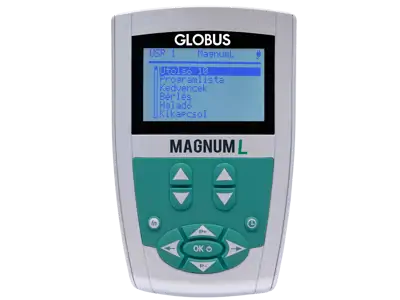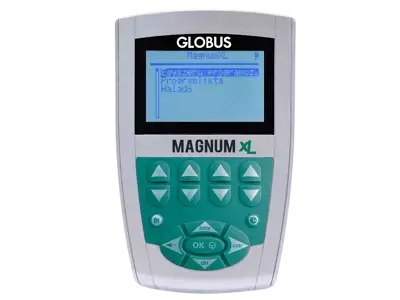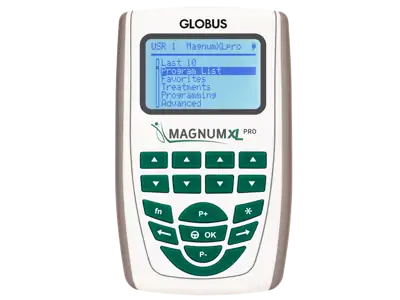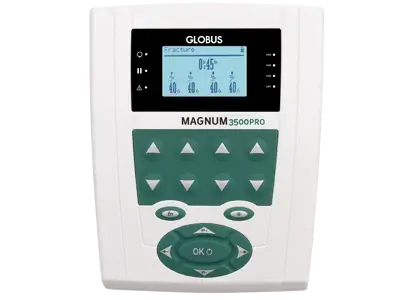Osteoporosis
Osteoporosis is the deterioration and fragility of the bone structure, with fractures often occurring.
Read more...Orthritis is a very insidious disease, as it does not cause any clinical symptoms or complaints for a long time. The first sign is often an unexpected fracture due to a minor accident (e.g. a fall). In its severe form, it can also threaten the safety of everyday life.
Symptoms of osteoporosis
In osteoporosis, the bone material becomes abnormally thinner, while the structure and distribution of the remaining bone remains normal. The consequence is weakening of the bones. They also fracture under the stresses they previously tolerated without problems. The most common sites of fracture are the bones of the spine, femoral neck, pelvis and wrist. In advanced cases, a bend, lifting a small object or coughing can lead to a fracture. The vertebrae can collapse from the weight of the body, leading to stooping of posture and loss of height.

Often osteoporosis accompanies hormonal diseases or conditions (e.g.
Although many people think of osteoporosis as a female disease, a significant number of men also suffer from it. Many men are "halfway through", with reduced bone mass but no fractures.
Diagnosis of osteoporosis
Bone mineral density (osteodensitometry)
This is a measurement of bone mass at the sites most prone to fracture (femoral neck, lumbar vertebrae, wrists). The greater the mass of the bone, the more it absorbs radiation; thinner, low-mass bone absorbs less energy. Optimal bone mass is determined using a statistical method, and deviation from the norm is proportional to the risk of bone fracture.
X-ray examination
The trained eye can see signs of osteoporosis on X-ray. Especially severe conditions. Collapsed fractures of the vertebrae are clearly visible, some vertebrae become wedge-shaped, curvatures of the back are increased.
Laboratory blood and urine tests are used mainly to rule out metabolic bone diseases.
Medications for osteoporosis
A number of drugs are tried. Some agents inhibit the function of bone-degrading cells. Other drugs mimic the action of oestrogens. Estrogens inhibit bone breakdown.
Estrogen supplementation slows bone loss during menopause but increases the risk of cardiovascular disease and breast cancer and is not recommended.
Calcitonin affects calcium metabolism by inhibiting the function of bone-degrading cells. Unfortunately, it loses its effectiveness after 2-3 years.
Progesterone stimulates bone-building cells.
Our body's daily calcium needs vary with age. A minimum of 500-600 mg per day is required. A higher and more sustained intake of calcium than recommended can lead to kidney stone formation and can interfere with the absorption of other minerals. In the treatment of osteoporosis, a daily intake of 1.5 grams of calcium, 600 mg of magnesium and 25-50 mg of manganese is recommended. Other important substances for maintaining a balanced calcium balance and bone metabolism are fluoride, magnesium, copper, manganese and strontium.
Vitamin D is necessary for calcium absorption. If there is insufficient vitamin D, calcium supplementation is not effective. For the prevention of osteoporosis, 200-400 international units of vitamin D3 per day are recommended.
Vitamin B6 is also necessary for the maintenance of healthy bone and cartilage and for the rapid healing of fractures.
Vitamin C deficiency damages the collagen in bones, so a daily intake of 500 mg of vitamin C is recommended.
Vitamin K and folic acid are also essential for bone metabolism.
Phosphorus is an important building block of bones. In excessive amounts, however, it hinders the absorption of calcium. With the range we take in with today's diets, it's more the overdose that's the risk. They are high in phosphorus and should be avoided, such as fizzy drinks, bulk cheeses and animal offal.
So it is important to eat a varied diet, get enough calcium and vitamin D and maintain an optimal body weight.
Physical therapy for osteoporosis
Exercise plays an important role!
Exercise reduces bone loss! Age-appropriate physical activity does not endanger bones, but improves overall fitness and well-being. It reduces pain, prevents or corrects abnormal changes in the shape of the spine, improves posture and even the sense of balance.
To relieve any pain or muscle aches, TENS or Microcurrent stimulation therapy is the key. You can use icing or even heat therapy.
Magnetotherapy treatments are widely used in western countries to treat osteoporosis. Several studies have examined the effects of magnetic field treatment on bone mass. The results are thought-provoking. Although in most cases no significant change in bone mass can be measured, the vast majority of patients (usually at least 75-85%) report a reduction or cessation of symptoms and a noticeable improvement in their quality of life.
The product group includes devices and equipment for the home treatment of osteoporosis.
Back to top...





